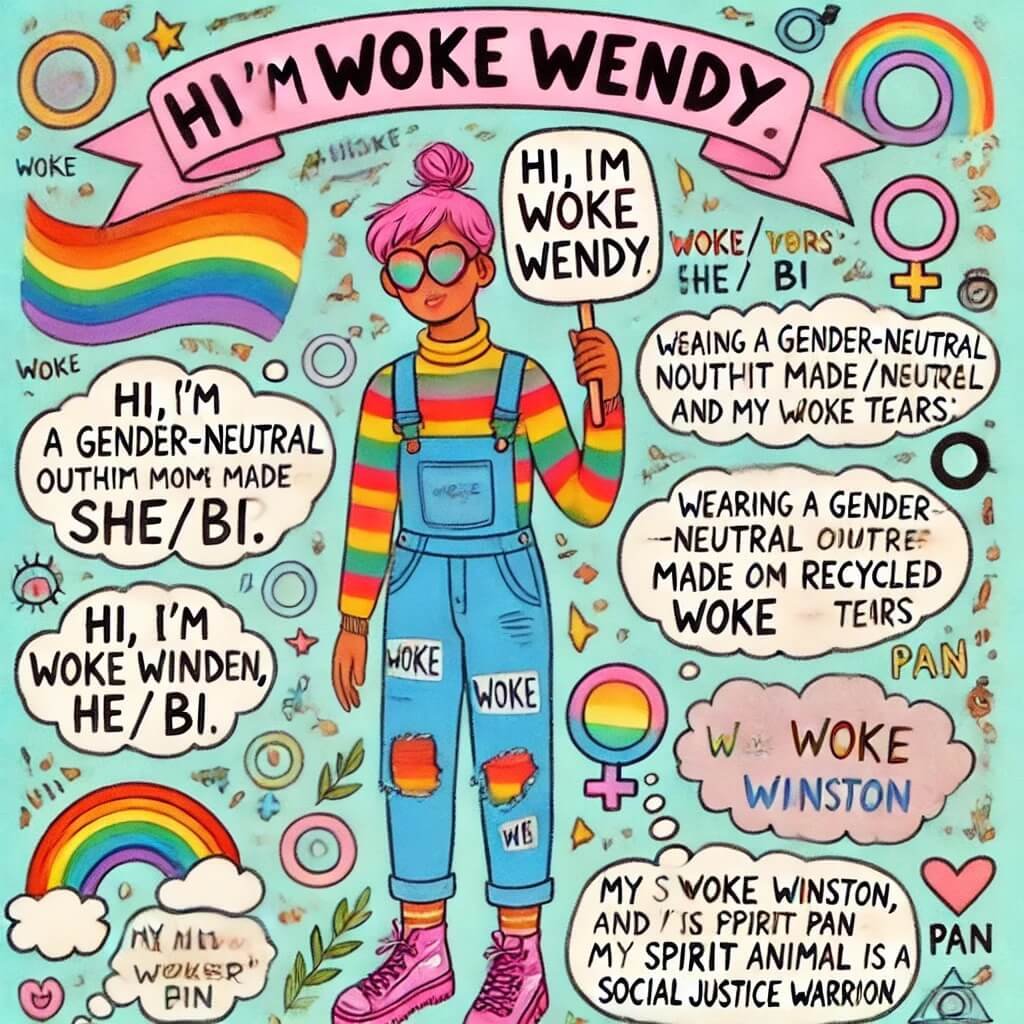Understanding Woke Introductions
Woke individuals have turned introductions into a detailed display of their identities. “Hi, I’m Woke Wendy, she/her, wearing a gender-neutral outfit made from recycled materials, and my pronouns are ‘woke/woker’.”
Seriously, this trend of sharing pronouns and personal details during introductions has become a way for Woke folks to demonstrate their commitment to inclusivity and social justice. It’s like they’re saying, “Look at me, I’m so conscious of social issues that I need to tell you about my gender identity before we can even start a conversation!”.
Table of contents
In some ways, it is like a form of self-promotion, akin to a Woke LinkedIn profile. “Skills: intersectionality, Social Justice advocate, pronoun expert.”
But let’s be honest, most people are just interested in knowing your name and perhaps a fun fact about you, not your entire Woke resume.
Wokeism teaches that assuming someone’s race, gender, or sex based on appearance is disrespectful and harmful. Judging someone solely on their appearance can lead to misidentifications and perpetuate stereotypes. For instance, just because someone appears to be female or black, does not mean they identify as such. Similarly, disabilities might not always be visible.
Wokeism teaches that assuming someone’s Race, Gender or Sex based on appearance is Disrespectful and Harmful.

Enforcing Inclusivity
- Enforcing Diversity: By sharing these details, individuals acknowledge the diversity within human identities. This helps to create an environment where everyone feels seen and valued for who they are.
- Enforcing Pronouns: Sharing gender and pronouns (he/him, she/her, they/them) ensures that others can address them correctly, avoiding misgendering, which can be hurtful and disrespectful.
- Enforcing Differences: When people routinely share these aspects of their identity, it normalises the practice and encourages others to do the same, fostering an inclusive community.
Creating so-called Safe Spaces
- Enforcing Trust: Being open about one’s identity can help build trust and rapport within a group, making others feel safe to share their own identities.
- Reducing Assumptions: It reduces the risk of making incorrect assumptions about others, which can lead to misunderstandings and discomfort.
- Empowerment: For individuals from marginalised groups, openly stating their identity can be an empowering act of self-affirmation.

Practical Considerations for Wokeness
- Clarification in Communication: In settings where communication is key (like online forums or professional environments), knowing someone’s name, gender, and pronouns helps in clear and respectful interaction.
- Avoiding Confusion: This practice helps avoid confusion in diverse groups, especially those meeting for the first time, and ensures that everyone’s identity is acknowledged correctly.
The Context of Appearance
- Descriptive Clarity: Mentioning appearance might be relevant when visual identification is necessary, such as at significant events or in professional settings where participants may not be familiar with each other.
- Normalising Self-description: It normalises talking about appearance in a respectful and factual way, moving away from objectification or superficial judgements.
Raising Awareness Of Wokeism – Woke Self-Introductions
Overall, this practice aligns with respect, inclusivity, and awareness. It ensures that everyone’s identity is acknowledged.
- Education: It provides an opportunity to educate others about Wokeism.
- Visibility: Increased visibility can help combat the human face of Wokeism.


